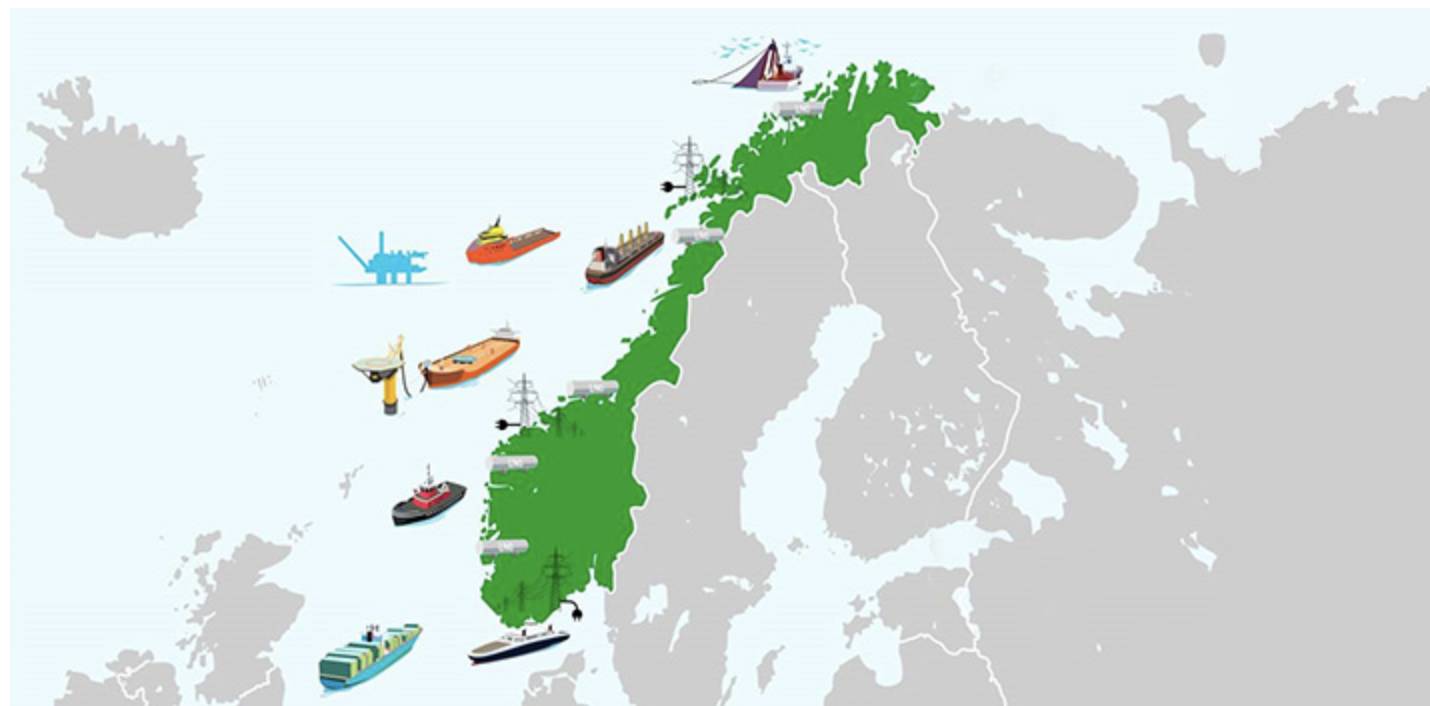Green coastal shipping private public partnership on eco-friendly transport
(
Private sector
)
#OceanAction41890
Description
The programme will be realized by the industry and government working together in a long-term public- private partnership. This is a joint effort in which all the significant players in the value chain contribute, ie, cargo owners, logistic companies, ship owners, ports, and vendors of electricity, gas, equipment and services.
The key logic of bringing all parties together is the importance of collective decision making. For example, ship owners will not install LNG or battery technology for all-electric operation before the infrastructure is in place. But gas and electricity suppliers and ports will not build the infrastructure before the market is there. And thirdly, it does not help that the ships can sail and fill green fuel from a well-developed infrastructure if cargo owners and logistics companies will not prioritize sustainable transportation. The authorities must facilitate it all to happen. The programme can be an effective instrument for the implementation of the government’s new port and maritime strategies
• Cargo Freighters’ Association
• Corvus
• ABB
• Energy Norway
• The Confederation of Norwegian Enterprise
• Gasnor
• Statoil
• Flora municipality
• Oslo municipality
• Teekay Shipping Norway
• Echandia
• Torghatten
• Seatrans
• NOx-fund
• Kongsberg Maritime
• KS Enterprise
• Risvika Port
• ZEM
• GoodFuels
• GMC
• Maritime Battery Forum
• Norwegian Fishing Vessel Owners Association
• DNV GL AS
Government observers:
• Innovation Norway
• Enova
• Ministry of Climate and Environment
• Ministry of Trade and Fisheries
• Norwegian Maritime Authoroty
• Norwegian Public Roads Administration
• Norwegian Coastal Administration
• University of Oslo
• Export Credit Norway
• GIEK
• Norwegian Research Council
SDGS & Targets
Goal 14
Conserve and sustainably use the oceans, seas and marine resources for sustainable development
14.1
By 2025, prevent and significantly reduce marine pollution of all kinds, in particular from land-based activities, including marine debris and nutrient pollution
14.1.1
(a) Index of coastal eutrophication; and (b) plastic debris density
14.2
By 2020, sustainably manage and protect marine and coastal ecosystems to avoid significant adverse impacts, including by strengthening their resilience, and take action for their restoration in order to achieve healthy and productive oceans
14.2.1
Number of countries using ecosystem-based approaches to managing marine areas
14.3
Minimize and address the impacts of ocean acidification, including through enhanced scientific cooperation at all levels
14.3.1
14.4
By 2020, effectively regulate harvesting and end overfishing, illegal, unreported and unregulated fishing and destructive fishing practices and implement science-based management plans, in order to restore fish stocks in the shortest time feasible, at least to levels that can produce maximum sustainable yield as determined by their biological characteristics
14.4.1
14.5
By 2020, conserve at least 10 per cent of coastal and marine areas, consistent with national and international law and based on the best available scientific information
14.5.1
14.6
By 2020, prohibit certain forms of fisheries subsidies which contribute to overcapacity and overfishing, eliminate subsidies that contribute to illegal, unreported and unregulated fishing and refrain from introducing new such subsidies, recognizing that appropriate and effective special and differential treatment for developing and least developed countries should be an integral part of the World Trade Organization fisheries subsidies negotiation
14.6.1
Degree of implementation of international instruments aiming to combat illegal, unreported and unregulated fishing
14.7
By 2030, increase the economic benefits to Small Island developing States and least developed countries from the sustainable use of marine resources, including through sustainable management of fisheries, aquaculture and tourism
14.7.1
Sustainable fisheries as a proportion of GDP in small island developing States, least developed countries and all countries
14.a
Increase scientific knowledge, develop research capacity and transfer marine technology, taking into account the Intergovernmental Oceanographic Commission Criteria and Guidelines on the Transfer of Marine Technology, in order to improve ocean health and to enhance the contribution of marine biodiversity to the development of developing countries, in particular small island developing States and least developed countries
14.a.1
14.b
Provide access for small-scale artisanal fishers to marine resources and markets
14.b.1
Degree of application of a legal/regulatory/policy/institutional framework which recognizes and protects access rights for small‐scale fisheries
14.c
Enhance the conservation and sustainable use of oceans and their resources by implementing international law as reflected in United Nations Convention on the Law of the Sea, which provides the legal framework for the conservation and sustainable use of oceans and their resources, as recalled in paragraph 158 of "The future we want"
14.c.1
Number of countries making progress in ratifying, accepting and implementing through legal, policy and institutional frameworks, ocean-related instruments that implement international law, as reflected in the United Nations Convention on the Law of the Sea, for the conservation and sustainable use of the oceans and their resources
SDG 14 targets covered
| Name | Description |
|---|---|
| 14.1 | By 2025, prevent and significantly reduce marine pollution of all kinds, in particular from land-based activities, including marine debris and nutrient pollution |
| 14.3 | Minimize and address the impacts of ocean acidification, including through enhanced scientific cooperation at all levels |
Deliverables & Timeline
Resources mobilized
Partnership Progress

Feedback
Action Network

Timeline
Entity
SDGs
Geographical coverage
Ocean Basins
Communities of Ocean Action
Website/More information
Countries
Contact Information
Erik Giercksky, Director, Head of Communication

